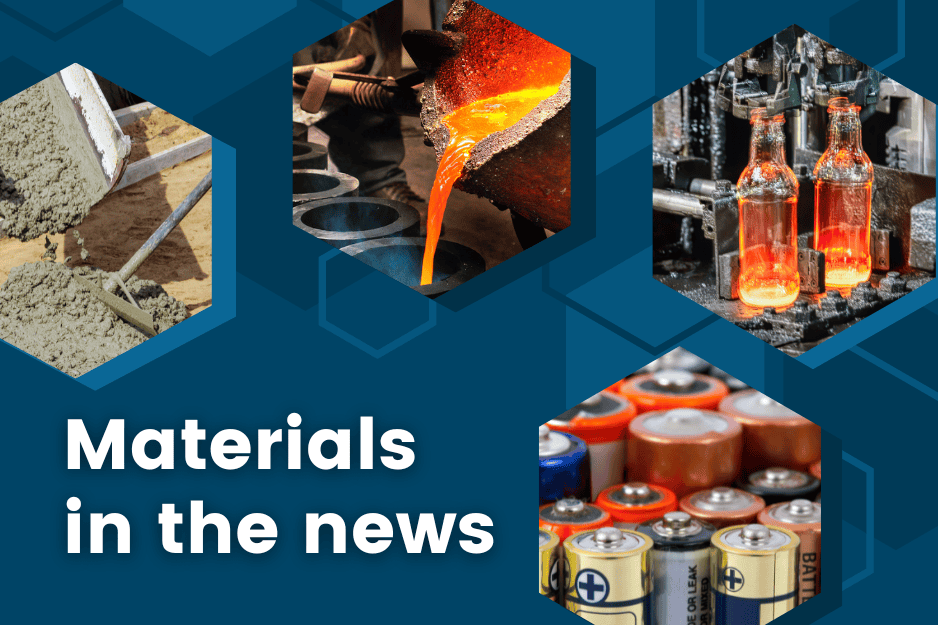
[Image above] Credit: ACerS
ENERGY
LONGi sets new record for tandem solar cells with 34.85% efficiency
LONGi researchers developed a two-terminal crystalline silicon–perovskite tandem solar cell that achieved a conversion efficiency of 34.85%, certified by the U.S. National Renewable Energy Laboratory, once again breaking the world record for tandem cell efficiency.
Scientists achieve nearly 100% voltage recovery in aging batteries
Researchers led by Ningbo Institute of Materials Technology and Engineering of the Chinese Academy of Sciences developed zero thermal expansion cathode materials. This innovation has achieved nearly 100% voltage recovery in aging lithium-ion batteries.
Cone and disc carbon structures offer new pathways for sodium-ion batteries
Researchers led by Rice University, along with collaborators from Baylor University and Indian Institute of Science Education and Research Thiruvananthapuram, showed that graphitic carbon cones and disks are viable anode candidates for sodium-ion batteries.
Advanced imaging technique reveals catalyst degradation processes
Researchers in the Liquid Sunlight Alliance of the DOE Energy Innovation Hub used sophisticated X-ray techniques to observe how copper oxide nanoparticles change during electrochemical carbon dioxide reduction.
ENVIRONMENT
Industrial waste is turning to rock in just decades
University of Glasgow researchers found that slag, a byproduct of steel production, is turning into solid rock in as little as 35 years. This rapid and unplanned-for development could have negative impacts on ecosystems and biodiversity, as well as coastal management and land planning.
Research links weather extremes to coastal sediment supply in California
A new study by the U.S. Geological Survey examines how hydrologic extremes can dramatically reshape sediment transport in a coastal California river—and how those changes ripple downstream to impact coastlines.
MANUFACTURING
New method for 3D printing high-temperature superconductors
Researchers at Northwestern University and Fermi National Accelerator Laboratory invented a new process for 3D printing high-temperature ceramic superconductors. This method is the first to fabricate 3D-printed ceramic superconductors with a monocrystalline microstructure.
Hydrogel-infused additive manufacturing of ceramics
Researchers at Lawrence Livermore National Laboratory explored hydrogel-infused additive manufacturing of ceramics. They found that the hydrogel formulation and the type of metal salts both play key roles in determining the ceramic’s quality, density, porosity, and strength.
OTHER STORIES
Breaking a century-old physics barrier: Perfect wave trapping with simple cylinders
A joint research team from Pohang University of Science and Technology and Jeonbuk National University successfully demonstrated the complete confinement of mechanical waves within a single resonator—something long thought to be theoretically impossible.
Smart surfaces: A powerless solution to multipath signal interference
Nagoya Institute of Technology researchers designed a passive metasurface-based filtering system that breaks free from linear time-invariant constraints through an innovative time-varying interlocking mechanism. The design incorporates metasurface panels with internally coupled circuit elements, including metal-oxide-semiconductor field-effect transistors.
AI learns to uncover the hidden atomic structure of crystals
Columbia University researchers created a machine learning algorithm that can observe the diffraction pattern produced by nanocrystals to infer the material’s atomic structure.
Author
Lisa McDonald
CTT Categories
- Weekly Column: “Other materials”
Related Posts
Other materials stories that may be of interest for November 5, 2025
November 5, 2025
Other materials stories that may be of interest for October 29, 2025
October 29, 2025
Other materials stories that may be of interest for October 22, 2025
October 22, 2025